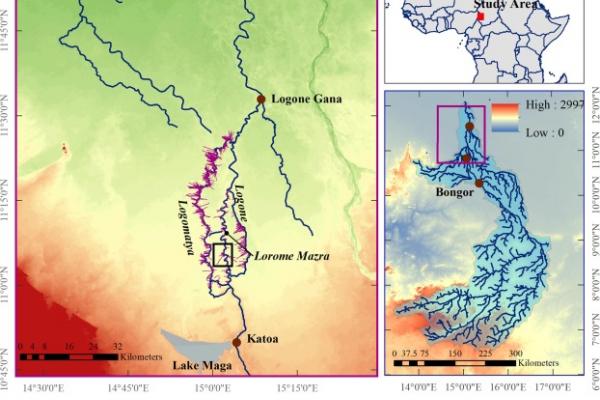Paper in Journal of Hydrology

Our paper on the hydraulic impact of fish canals is out in the Journal of Hydrology. The lead author is Apoorva Shastry, a former graduate student from our MORSL team.
Shastry, Apoorva Michael Durand; Jeffrey Neal; Alfonso Fernández; Sui Chian Phang; Brandon Mohr; Hahn Chul Jung; Saïdou Kari; Mark Moritz; Bryan Mark; Sarah Laborde; Asmita Murumkar; Ian Hamilton. Small-scale anthropogenic changes impact floodplain hydraulics: simulating the effects of fish canals on the Logone Floodplain. Journal of Hydrology, 588(2020):125035. 10.1016/j.jhydrol.2020.125035.
Here is the abstract: Assessing the impact of climate change on floodplain productivity poses unique challenges for hydrodynamic models. For example, the dynamics of floodplain fisheries are governed both by inundation dynamics across thousands of km2, and water storage timing within small depressions (which serve as fish habitat) connected to the river network by meter-scale manmade canals, controlled by flow across fishing weirs. Here, we propose to represent these features as a system of effective, interconnected sub-grid elements within a coarse-scale model. We test this strategy over the Logone floodplain in Cameroon, and its floodplain fishery. We first validate this strategy for a local study area (30 km2); we find that hydraulic models at resolutions from 30 m to 500 m are able to reproduce hydraulic dynamics as documented by in situ water level observations. When applied to the entire floodplain (16,000 km2), we find that the proposed modeling strategy allows accurate prediction of observed pattern of recession in the depressions. Artificially removing floodplain canals in the model causes residence time of water in depressions to be overpredicted by approximately 30 days. This study supports the strategy of modeling fine-scale interconnected features as a system of sub-grid elements in a coarse resolution model for applications such as assessing the sensitivity of floodplain fisheries to future climate change.
